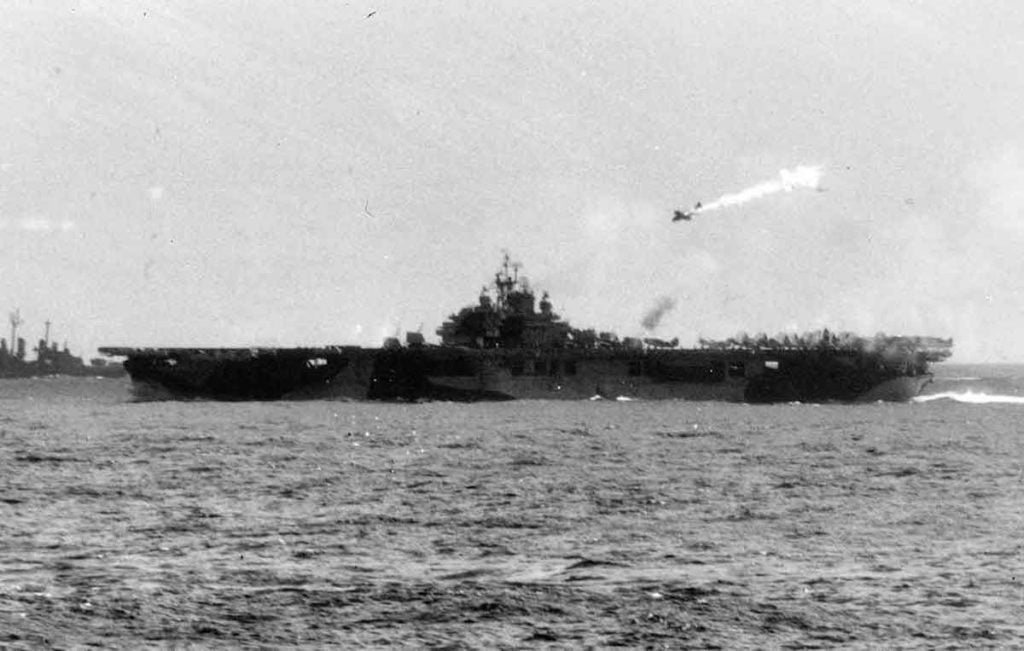Japanese kamikaze pilots commonly struck fear in the hearts of allied troops as they conducted choreographed nose-dives right into U.S. ships during World War II’s Pacific fight.
Although the act proved costly for both sides, the Japanese were determined to take out as many Americans as they could in their quest for victory.

Related: This is actual footage of the Japanese surrender aboard the USS Missouri
Reportedly, the first kamikaze operation of WWII occurred during the Battle of the Leyte Gulf in the Philippines.
After a mission had been planned out, the pilots of the Japanese “Special Attack Corps” received a slip of paper with three options: to volunteer out of a strong desire, to simply volunteer or to decline.

Although the majority of the fighter pilots completed their final mission, a few were noted to divert and change their course at the last second while others suffered engine malfunctions causing them to abort.
On Dec. 28, 1944, while transporting supplies to Mindoro, Philippines, a trained kamikaze pilot dodged incoming Allied fire and flew directly into the USS John Burke, destroying the instantly.
The plane struck the the vessel’s ammunition storage area causing a monstrous secondary blast that killed all the troops aboard.
By the end of January 1945, at least 47 allied vessels were sunk by Japanese kamikaze pilots — and other 300 were damaged.
Check out the video below to see how an unsure cameraman from a nearby ship accidentally caught one of the deadliest kamikaze missions and recorded it on film.

andrew hayes, YouTube


